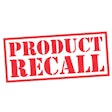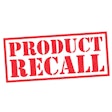The world in which we operate will continue to change dramatically throughout the next decade as global commerce evolves due to an ever-increasing flow of goods, and increased competition for global resources. Additionally, governments will play a major role in the food supply chain at the international level.
The growing demand for food, given an already constrained food supply, is pushing the agricultural industry to be creative in its search for alternative animal food sources. This increased competition for food comes at a time when the world is seeking global standardization. Additionally, regulators, scientists and consumers are moving toward a new consensus based upon environmental responsibility, which will result in increased regulatory scrutiny. Businesses have seen, and will continue to see, stricter environmental regulations and increasing demands for greater environmental stewardship. Manufacturers and producers continuously need to set new standards and implement new technologies to meet current demands while remaining competitive, relevant and profitable.
The US is not immune to the effects of these changes. Global trends of increased standardization in the coming decade will have substantial implications for the US Food and Drug Administration (FDA); manufacturers and producers regulated by FDA will need to adapt quickly in order to remain viable. FDA has been forced to re-evaluate US regulatory requirements governing all aspects of the food supply chain for many reasons, including increased external influences towards global standardization; evolving regulatory requirements of foreign countries; increased global demand for safer feed products and a limited supply of safe feed products and food; and continued growth in imports and exports and the use of overseas manufacturing/processing facilities.
According to the US Government Accountability Office (GAO), 10% to 15% of all food consumed in the US each year is imported. In addition, the export of agricultural commodities is expected to continue to grow throughout the next decade.
Since the enactment of the Pure Food and Drug Act of 1906, technological innovation has driven food safety advances. However, FDA recognized that it could no longer rely on its own historical tools and enforcement activities to regulate feed and food products, and must modernize its safety plan to be consistent with global trends.
In response to several decades of changes around the world impacting the food supply chain, as well as eroded consumer confidence in food safety due to a series of foodborne outbreaks (i.e., the 2007 melamine in petfood recall, the 2009 peanut butter recall and the 2011 listeria outbreak), on January 4, 2011, President Obama signed into law Senate Bill S.510, commonly known as the Food Safety Modernization Act (FSMA), referred to here as “the Act.” According to FDA, FSMA is “the most sweeping reform of our food safety laws in more than 70 years.” FDA’s challenge will be to fulfill its mission given limited resources.
The need for an overhaul of food safety regulations governing the US food supply chain is validated by the many foreign governments which have recognized the same need. Many countries have determined that food regulations must be modernized in order to increase food safety and to compete in a global environment, including Canada’s Feed Hazard Identification and Preventive Controls; Mexico’s GMP manual for the manufacture of food products for animal consumption; and the Philippines Food Safety Act of 2013.
FSMA seeks to improve public health by making the food safety industry more “preventive” rather than “reactive.” In other words, rather than simply having systems in place to respond to contamination and/or mislabeling of food after the fact, the focus is on ensuring that systems are in place to minimize risks and hazards and to prevent such incidents from occurring in the first place. According to FDA officials:
“The law directs a comprehensive overhaul of our food safety system, using three broad themes:
- Advancing Public Health – by focusing on prevention of food safety problems through broad, consistent industry implementation of modern preventive practices.
- Leveraging and Collaborating – by working in close collaboration with other government agencies (federal, state, local, tribal and foreign), the food industry and other stakeholders to make [sic] the best use of all available food safety resources.
- Strategic and Risk-Based Industry Oversight – including clear FDA guidance on standards, outreach and technical assistance … "
– FDA Voice, May 2, 2014, by Michel R. Taylor (FDA’s deputy commissioner for Foods and Veterinary Medicine) and Howard Sklamberg (FDA’s deputy commissioner for Global Regulatory Operations and Policy)
FDA believes that preventive control standards and procedures will improve food safety, but recognizes that this will occur only to the extent that producers and processors comply. Therefore, FDA will provide oversight to ensure compliance with requirements and to respond effectively when problems emerge.
This oversight begins with registration of food facilities with FDA. FSMA amended Section 415 of the Federal Food, Drug and Cosmetics Act to require domestic and foreign facilities that manufacture, process, pack or hold food for human or animal consumption in the US to register with FDA. All facilities involved in the food (animal feed and petfood included) supply chain (with limited exemptions, e.g., farms) will need to comply with all or part of FSMA’s rules and regulations.
Since the signing of FSMA in January 2011, FDA has released five key rules that establish the framework for a prevention-oriented industry, as mandated by the Act. These proposed rules cover the production, processing, holding and import of human and animal foods that are offered for commerce in the US, independent of country of origin. These rules are:
- Current Good Manufacturing Practice and Hazard Analysis and Risk-Based Preventive Controls for Human Food
- Current Good Manufacturing Practice and Hazard Analysis and Risk-Based Preventive Controls for Food for Animals
- Foreign Supplier Verification Programs (FSVP) for Importers of Food for Humans and Animals
- Accreditation of Third-Party Auditors/Certification Bodies to Conduct Food Safety Audits and to Issue Certifications
- Sanitary Transportation of Human and Animal Food
The proposed rules for preventive controls for food, facilities manufacturing, processing, packing and holding animal food, both domestically and abroad, would minimize or prevent hazards reasonably likely to occur. Additionally, the industry would need to follow new current good manufacturing practices (CGMPs) with respect to personnel, plants and grounds, sanitation, equipment, processing and distribution activities. This is the first time CGMPs would be required for the animal food industry. The proposed CGMPs for animal food are similar to those for human food, with some exceptions (e.g., it does not address allergen cross contact). These guidelines provide minimum requirements that a food facility must meet to ensure that products have high quality standards and do not pose any risk to consumers.
The proposed Hazard Analysis and Risk-Based Preventive Controls (HARBPC) rule requires each covered facility to prepare and implement a written food safety plan to identify potential hazards, similar to Hazard Analysis and Critical Control Points (HACCP) systems that are required by FDA for juice and seafood. The food safety plan would include:
- Hazard analysis (identifies or evaluates known or reasonably foreseeable hazards)
- Preventive controls (depends on which hazards are reasonably likely to occur)
- Monitoring procedures (to provide assurance that preventive controls are consistently performed)
- Corrective actions (used if preventive controls fail or are not properly implemented)
- Verification
- Creation and maintenance of associated records
A food supply chain safety plan should include a recall process, according to FSMA. A recall plan cannot be complete without good traceability capacity. Traceability is a key component to food safety that makes recalls more efficient, and also ensures that the correct information will be delivered to consumers much more quickly. The lack of an effective traceability system is one of the main reasons food recalls may escalate into crisis situations. Enhanced product traceability will result in faster recalls and, in turn, will improve consumer safety.
Under the proposed rules, grain elevators and warehouses that store only raw agricultural commodities (other than fruits and vegetables) intended for further processing or distribution are exempt from CGMPs and HARBPC requirements.
FSMA requires that food imported into the US be produced with at least the same level of public health protection as is required for food grown and processed in the US. Food importers, as outlined in proposed rules, will be required to develop FSVPs that comply with US standards, including FDA’s proposed safety and preventive controls rules. Each FSVP must be developed by persons with the necessary education, training and experience, and should include compliance status review, hazard analysis, verification activities, corrective actions, importer identification, recordkeeping and periodic reassessment of the FSVP.
FSMA also establishes a procedure for the accreditation of third-party auditors to certify that foreign facilities exporting food to the US are compliant with the Federal Food, Drug and Cosmetic Act. Under the Proposed Rule, FDA would recognize accreditation bodies, which would then accredit third-party auditors (certification bodies) to conduct food safety audits and issue certifications for foreign facilities. Each certified accreditation body would be required to perform the following activities:
- Assess third-party auditors for accreditation
- Annually assess the performance of the third-party auditors it has accredited
- Annually conduct a self-assessment and correct any problems in its own performance
- Submit reports and other notification to FDA
- Protect against conflicts of interest
- Maintain accreditation-related records and make records available to FDA upon request
Similarly, an accredited third-party auditor is required to ensure its agents are competent and objective, conduct rigorous audits, submit reports of audits used for certification purposes to FDA, assess and correct any problems in its own performance, protect against conflicts of interest, maintain and provide FDA access to records, and notify FDA upon finding any condition posing a serious risk to public health.
FDA’s proposed Sanitary Transportation rule establishes criteria for the safe transportation of food. It would require those who transport human and animal food to use sanitary transportation practices. The proposed rule covers human and animal food traveling via motor or rail vehicle. Specifically, the rule would establish requirements for vehicles and transportation equipment, transportation operations, information exchange, training, records and waivers. The requirements would apply to:
- shippers, receivers and carriers who transport food in the US by motor or rail vehicle, regardless of whether the food is offered for or enters interstate commerce; or
- a person or organization outside of the US who ships food to the US for either consumption or distribution, and arranges for the transfer of the intact container in the US onto a motor vehicle or rail vehicle for transportation in US commerce.
The proposed rule establishes requirements for:
- Vehicle and transportation equipment design and maintenance
- Transportation operations and procedures to ensure transported food is not contaminated
- Procedures and record retention for exchange of information about prior cargos, cleaning of transportation equipment, and temperature control between the shipper, carrier and receiver, as appropriate to the situation
- Training of carrier personnel
In addition to these proposed rules, FDA will be releasing guidance documents to aid the industry on understanding FDA’s view of specific areas of interest related to the FSMA.
In implementing the requirements of the FSMA, however, FDA has underestimated the impact its rules would have on the feed industry. For example, the National Grain and Feed Association (NGFA) has estimated that the annual cost of implementing the CGMPs and hazard analysis and risk-based preventive controls regulations, will be approximately US$56,385–$127,715 in labor costs per facility, or over US$430.33 million annually. These numbers are considerably greater than FDA’s Preliminary Regulatory Impact Analysis that estimates the cost to be US$13,300–$18,300 per facility, or US$93.45 million annually for the entire industry.
As explained by the NGFA, “the lower dollar amount on NGFA’s estimate represents the anticipated cost for complying with the proposed CGMPs requirements and only the provisions of the preventive controls regulations that would require hazard analysis to be conducted. The higher dollar amount of NGFA’s estimate represents the anticipated cost of complying with proposed CGMPs requirements and all aspects of the preventive control regulations when control of ‘significant hazards’ would be required."
In order to remain viable, companies will need to include these proposed FSMA rules and regulations in their Governance, Risk and Compliance (GRC) strategic plan. The basic concept of a GRC plan is: 1) to ensure everyone knows what needs to be done; 2) to proactively review risks, put controls in place to mitigate these risks, and adapt as necessary; and 3) to monitor those controls to make sure they are working.
There may be no greater challenge for organizations doing business in the feed industry today than knowing that the products they buy, sell and/or process are safe, consistently meet quality expectations from customers and consumers, and are in compliance with governmental regulations.
Introducing strategies in an organization to meet these new regulatory requirements is simply not enough. Often, when planned strategies fail, there is usually nothing wrong with the strategy in itself. The root cause of an ineffective plan is more likely: 1) a failure to clearly and explicitly translate the strategy into specific actions the organization must take to make it a reality; 2) a failure to adapt the strategy to new conditions; or 3) a failure to sustain the strategy.
In order to remain a leader in the feed industry, organizations must make critical investments in skilled professionals (regulatory compliance, quality, enterprise risk management and environmental health and safety) and key processes to ensure safe, reliable and compliant products. Having the resources to help an organization’s partners navigate the incredibly complex issues that characterize feed supply chains and multiple markets will be indispensable. Implementing a superior Global Regulatory Strategy helps an organization stay in compliance. More importantly, as an integral part of a corporate marketing strategy, it will help an organization remain competitive, and be seen as a leader.
Understand that in order to be effective, the elements of the Global Regulatory Strategy must be compatible with business/marketing strategies of the products, must have cross-functional buy-in from regulatory, quality, marketing and management, and must be feasible with current resources. Overall, the feed industry must continually be driven to improve food quality and safety along the entire supply chain.

















